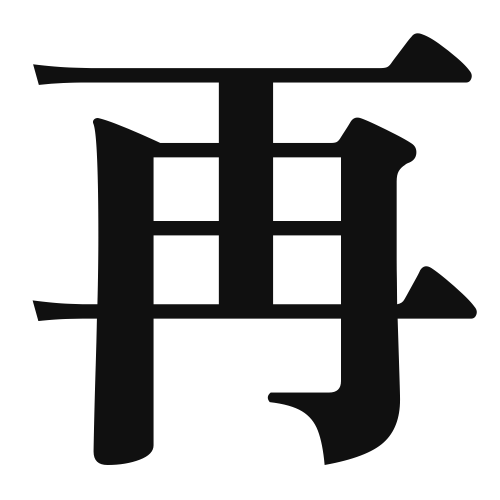1. Overview of Meaning
The kanji “再” (pronounced “sai” or “zai”) means “again” or “re-” in English. It is used to indicate repetition or a return to a previous state.
2. Formation and Radical
Formation of the Kanji: The kanji “再” is a phonetic-ideographic character (形声文字), which combines a meaning component with a phonetic component. The character itself represents the concept of doing something again.
Radical: The radical for “再” is “再” itself, which is also the complete character.
3. Examples of Usage
Common Words and Phrases: Some frequently used words that include “再” are:
- 再生 (さいせい, saisei) – regeneration, playback
- 再会 (さいかい, saikai) – reunion
- 再利用 (さいりよう, rairiyou) – recycling
Example Sentences in Daily Conversation:
- この映画は再生できますか? (このえいがはさいせいできますか?) – Can this movie be played again?
- 私たちは再会する予定です。 (わたしたちはさいかいするよていです。) – We are scheduled to meet again.
4. Synonyms and Antonyms
Similar Kanji: A similar kanji is “復” (ふく, fuku), which also means “to return” or “to restore,” but it often implies a more complete restoration rather than just repetition.
Antonyms: An antonym of “再” is “初” (はじ, haji), which means “first” or “initial,” indicating the beginning of something rather than a repetition.
5. Cultural and Historical Background
Relation to Japanese Culture: The concept of “再” is significant in Japanese culture, where the idea of renewal and starting over is often celebrated, such as during the New Year.
Proverbs and Idioms: One common saying is “再挑戦” (さいちょうせん, saichousen), which means “to challenge again,” reflecting the cultural value placed on perseverance and resilience.
